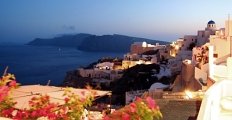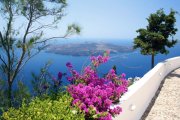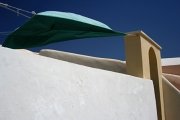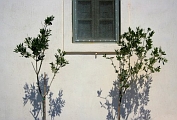Introduction One of the fundamental problems in neuroscience today is to understand how the activation of large populations of neurons give rise to the higher order functions of the brain including learning, memory, cognition, perception, action and ultimately conscious awareness. Electrophysiological recordings in behaving animals over the past forty years have revealed considerable information about what the firing patterns of single neurons encode in isolation, but it remains largely a mystery how collections of neurons interact to perform these functions.
At the same time, our understanding of how neuronal ensembles carry information has allowed the development of brain-machine interfaces (BMI) to enhance the capabilities of patients with sensory and motor deficits. Knowledge of how neuronal ensembles encode sensory stimuli has made it possible to develop perceptual BMIs for the hearing and visually impaired. Likewise, research in how neuronal ensembles decode motor intentions has resulted in motor BMIs by which people with severe motor disabilities can control external devices. Conference Mission Statement
Conference Organization The conference will take place on the Greek island of Santorini from Thursday through Sunday, June 22-25, 2006. The formal portion of the conference will take place at the Nomikos Conference Centre in the town of Fira. The conference will be single-track. Morning 45-minute talks with a half-hour coffee break will be followed by a provided lunch. After the long afternoon break, we will reconvene for coffee, early evening talks and poster presentations before a late dinner. Although attendees are welcome from around the world, speakers have been selected primarily from the United States and Europe. Attendees are highly encouraged to submit proposals for poster presentations. Submission of Poster Proposals Submission of abstracts for poster presentation has closed. If you have a late abstract to submit, please contact the organizers via email at info@areadne.org. Registration and Fees
Registration has closed. If you wish to register or have been invited or instructed to do so by one of the organizers, please contact us by email at info@areadne.org. Our refund policy in the event you have registered but will be unable to attend is that a full refund of the registration fees will be given until one month before the conference on 22 May; a 50% refund will be given from then until two weeks before the conference on 8 June; and after 8 June no refund will be given. Important Dates
Accommodations Many hotels are available in and around Fira and Firostefani, from inexpensive C class to luxury caldera-view cave suites. The conference center is located 15 minutes by foot from the center of Fira, and a similar distance from much of Firostefani. While it is possible to stay in the town of Oia, this would require driving to and from the conference center each day and is not recommended as parking is generally difficult. We hope that conference attendees, like the organizing committee, will stay in hotels that are walking distance from the Centre. A list of recommended hotels is available. We suggest booking your hotel room as early as possible. Meals
Breakfasts are typically included in hotel rates, or available with hotel reservations for a nominal charge. Evening meals will not be provided by the conference (except the banquet), but the island has a wide selection of restaurants, and we anticipate making loosely organized excursions to a different restaurant each evening. Some restaurant recommendations are available. Activities on the island In addition to sweeping vistas, Santorini boasts excellent nightlife, a respectable wine industry, beaches with white, black, or red sand, excavations of ancient civilizations, and some of the best sunsets around. More information can be found in various travel guides, or on the Web. Good places to start are publications like The Lonely Planet and The Rough Guide guides for Greece, and web sites like Greek Travel Santorini and Santorini Island. We are planning optional guided excursions to the archeological site of Ancient Thera and to the volcano island and sulfur springs at the center of the caldera. These events may not be able to accommodate everyone. Additional suggested activities are available. Sponsors
Transportation Air transportation to Athens International Airport (ATH) is available on a regularly scheduled basis through nearly all of the major international airlines. Air transport from Athens to Santorini (JTR) takes less than an hour and is available multiple times per day. It is normally possible to arrange flight schedules so that overnight stays in Athens are not required when connecting to and from Santorini. Sea passage from Athens to Santorini can be a relaxing experience and is recommended for the awe-inspiring approach to the port at the base of the immense caldera cliffs. Ferries for Santorini leave from the port of Piraeus, approximately one hour's taxi drive away from the Athens airport. Rail transportation is also available from the airport to the ferries but takes somewhat longer. There are two broad classes of boats, the canonical, or slow boats, and the fast, or highspeed, boats. Pricing goes according to boat speed and ticket class. Getting around on the island can be done by bus and taxi. Cars and scooters are readily available for hire. The conference center is located in the town of Fira, and is walking distance to many hotels and restaurants. More transportation information is available here. Visa Requirements European citizens have free Schengen access to Greece. United States citizens traveling on regular passports (excluding diplomatic and governmental passports) do not require visas for visits shorter than 90 days. Citizens of other countries will need to contact their home governments to determine visa requirements. Preliminary Schedule
19:00-21:00 welcome reception (wine and cheese) Thursday 09:00-12:30 lectures and coffee break 12:30-14:00 lunch 17:30-21:00 coffee, lectures and poster session Friday 09:00-12:30 lectures and coffee break 12:30-14:00 lunch 17:30-21:00 coffee, lectures and poster session Saturday 09:00-12:00 optional archaeological and geological excursions 17:30-21:00 coffee, lectures and poster session Sunday 09:00-12:30 lectures and coffee break 12:30-14:00 lunch 17:30-20:00 coffee and lectures 21:00-24:00 banquet reception (full dinner) Confirmed Speakers
Organizing Committee
Nicholas Hatsopoulos, Co-Chair Local Organizers
Nike Makres The Myth of Ariadne
Ariadne was the daughter of Minos, king of Crete. The hero Theseus came to Crete from Athens to slay the Minotaur (a half bull, half human creature) that was kept at the center of the Labyrinth -- a maze built by King Minos. Ariadne gave Theseus a sword and a ball of silk thread, which Daedalus, designer of the labyrinth, had given to her. Theseus tied one end of the thread to the door and unwound the thread as he went along, so that after he had found and slain the Minotaur, he could escape from the maze by following the thread back to the entrance. Et Cetera The language of presentation will be English. Registration is now closed. Poster submission is now closed. If you have a late abstract to submit, please contact us at info@areadne.org. Some practical information about visiting the island is available. For additional information, please contact the Organizing Committee Co-Chairs, Nicholas Hatsopoulos and John Pezaris, at info@areadne.org. The brain/maze logo was designed by Doug Rubino, a graduate student at UChicago working with Nicho Hatsopoulos. AREADNE | Email | Archive |






 The University of Chicago's Center
for Integrative Neuroscience and Neuroengineering Research (CINNR)
is sponsoring this conference with the help of a generous gift from Dr. and
Mrs. George Hatsopoulos.
The University of Chicago's Center
for Integrative Neuroscience and Neuroengineering Research (CINNR)
is sponsoring this conference with the help of a generous gift from Dr. and
Mrs. George Hatsopoulos.


